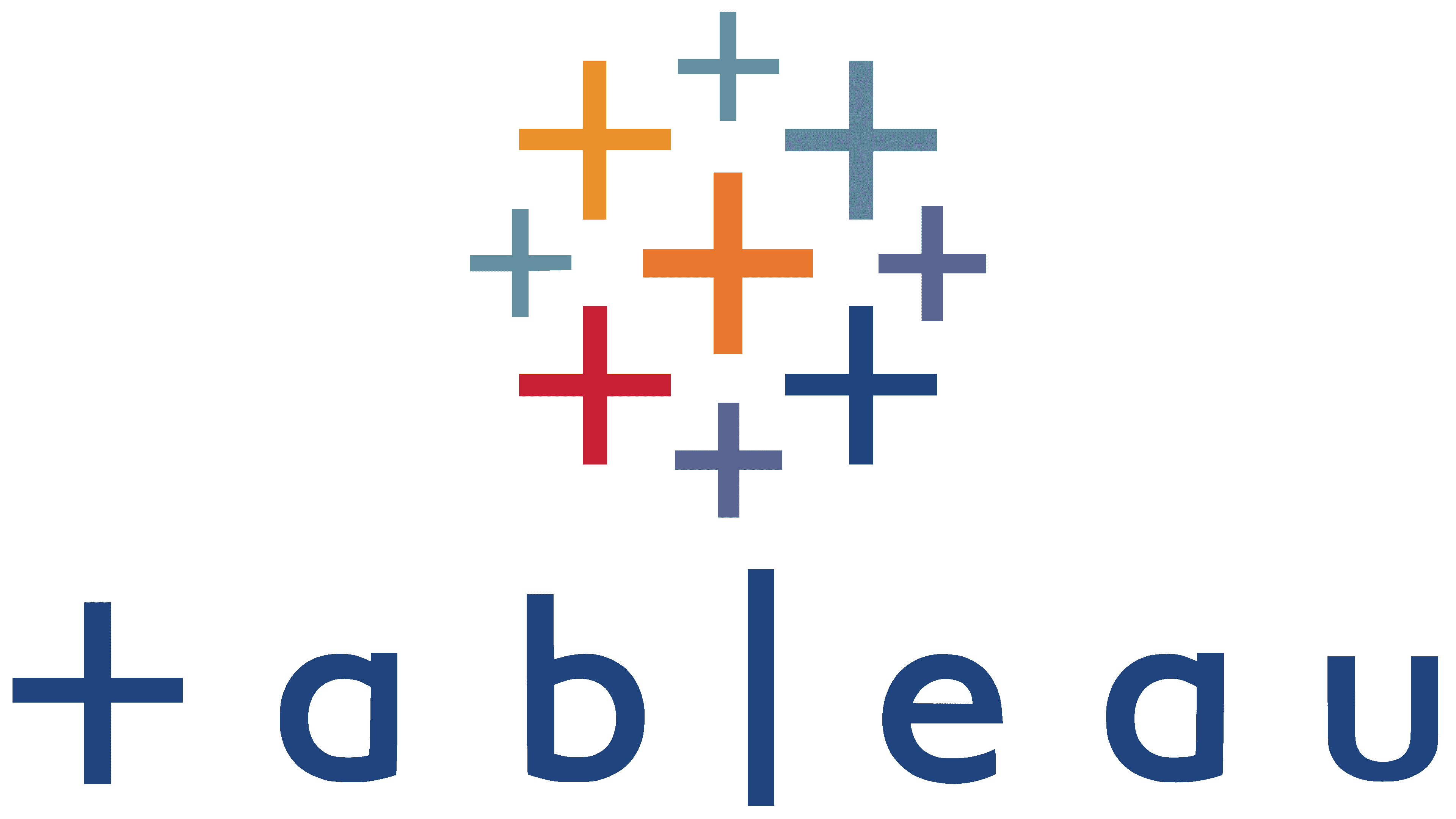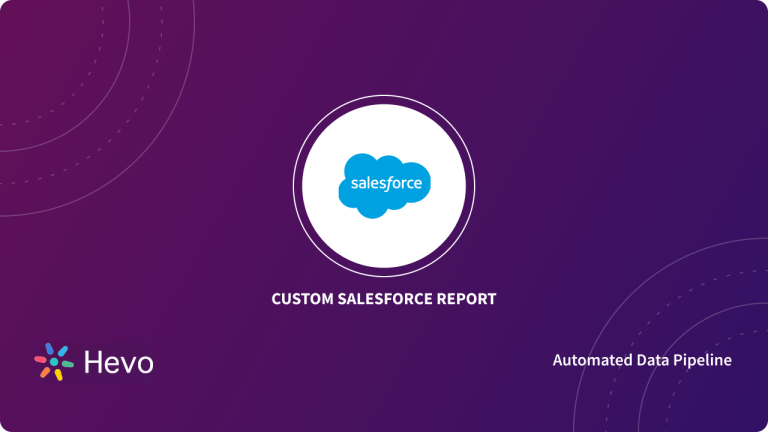Are you facing difficulties in analyzing your customer data? Do you find it gruelling to connect your Salesforce data to a BI tool such as Tableau? Well, look no further! This article will answer all your queries & relieve you of the stress of finding a truly efficient solution. Follow our easy step-by-step guide to help you master the skill of efficiently connecting Salesforce to Tableau and performing a fruitful analysis of your customer data to gain crucial insights that can help you create informative and insightful business reports.
A complete walk-through of the content will provide you with an in-depth knowledge of connecting Salesforce to Tableau.
Table of Contents
What is Tableau?

Tableau is a powerful business intelligence tool used to turn raw data into an understandable format. It is a tool popularly used to visualize data and can be understood even by a non-technical user. It creates visualizations with the help of dashboards and worksheets, helping users perform real-time analysis in a very fast and secure manner. It doesn’t require a user to have any programming skill or technical background to operate it.
Tableau comes pre-loaded with several sample workbooks. You can use these to get a better understanding of how a typical workbook looks like and how you can visualize data in Tableau.
What is Salesforce?
Salesforce is a cloud-based CRM tool that helps you maintain and manage your organization’s interactions with its customer base. Salesforce generates a lot of data from managing these interactions. It also offers cloud-based tools such as data analytics, IoT products. These generate data that provide priceless insights about customers and can be extremely useful for the organization.
Key features of Salesforce
- Contact Management: Salesforce offers smooth contact-management by providing access to critical customer data and interaction history. It provides great insights on how to use customer data to get a better understanding of their behaviour using various trends and metrics and formulate strategies.
- Dynamic Dashboards: Salesforce’s interactive dashboards provide a complete view of how well the business is performing using key factors such as market trends, customer behaviour, etc. You can easily create dashboards and generate real-time reports for your business.
- Opportunity Management: It is one of the best features of Salesforce. It provides you with an in-depth view of the customers’ timeline, their buying patterns, metrics, etc and lets you strategise your next move.
- Email Integrations: Salesforce supports full integration with applications like Microsoft Outlook, Gmail, etc and lets you synchronise your calendars and schedules. It even provides offline access to important emails and lets you develop personalised templates for potential customers.
You can also take a look at how you can get better insights by migrating your Salesforce data into a data warehouse like Amazon Redshift.
Are you worried about larger datasets? Storing such large volumes of data can degrade your Salesforce performance. You can optimize the handling of data with Hevo. Using Hevo, you can send your Salesforce data to any destination of your choice. This is how Hevo can come to your rescue:
- Integrates effortlessly: You can integrate your data from 150+ sources seamlessly.
- Complete & Accurate Data Transfer: Hevo’s robust infrastructure ensures reliable data transfer with zero data loss.
- Schema Management: It takes away the tedious task of schema management & automatically detects the schema of incoming data and maps it to the destination schema
Streamline your data management with Hevo. Join our 2000+ happy customers. Check out what Hornblower and Deliverr have to say about us.
Why Connect Salesforce and Tableau?
You can leverage Tableau to blend Salesforce data from across the Customer 360 platform with your other business data for a deeper understanding of your customers and increased visibility. Making a connection from Salesforce to Tableau provides your operations, finance, executives, and channel teams with secure, up-to-date, and tailored views of your data.
Prerequisites
- Working knowledge of Tableau.
- Working knowledge of Salesforce.
- Tableau installed at the host workstation.
- A Salesforce account.
Connecting Salesforce to Tableau using the in-built Salesforce connector
Tableau’s in-built Salesforce connector conveniently helps in setting up Salesforce to Tableau Integration. You can easily set up a data source and use Tableau to visualize your data to perform a fruitful analysis for your business.
Salesforce to Tableau Integration can be implemented using the following steps:
- Step 1: Configuring Tableau’s in-built Salesforce connector
- Step 2: Configuring the data source
- Step 3: Embedding the Dashboard into Salesforce
Step 1: Configuring Tableau’s in-built Salesforce connector
To start building Salesforce to Tableau Integration, launch Tableau on your workstation and select more from the connect column on the left. This will open a new window, from where you can select your desired data warehouse or database. Select Salesforce from the list of available options.
A new dialogue box will now open up. To connect with Tableau, you will need to provide your Salesforce credentials such as username and password to sign in to your Salesforce account and load data to Tableau.
Once you’ve signed in successfully, you will need to provide Tableau, access to your Salesforce data and your account. Click on the allow button to provide access to transfer your Salesforce data into Tableau.
This is how you can configure Tableau’s in-built Salesforce connector for the Salesforce Tableau Integration.
Step 2: Configuring the data source
The data source page loads up after configuring the Salesforce to Tableau connector and successfully signing in. This is how the page looks like:
Select the data source name option and give a unique name to the database you are using. It’s considered a good practice to have a unique name as it makes it much easier for users to identify the database from which data is being fetched.
Tableau allows you to either work by creating a standard connection and make use of some predefined queries, objects, and drag them onto the canvas to perform analysis, or set up a custom connection, where you can manually select tables and start analyzing your data.
To select the desired schema, you can use the schema drop-down list from the column on the left. You can also perform a text-based search to find the desired option. Now similarly find and select the desired table and drag it onto the canvas.
This is how you can connect Salesforce to Tableau. Now click on the sheets tab to begin the analysis.
Step 3: Embedding the Dashboard into Salesforce
Now that you have generated a dashboard for your account managers, you would want to ensure that it will be embedded into their homepage for efficient and easy access. For this, you are going to need to go to any individual’s account and modify their view. For this example, you can move to Bruce Kennedy’s homepage. After going to his homepage, click on the settings icon in the top right corner of your screen and select “Edit Page“.
On the left side of your screen, you can see the Components tab. You can search for “Tableau” on the search bar and locate the lightning viz component under the “Custom – Managed (1)” section.
The center of your screen will depict what objects will be on display when your account manager logs into their profile. By default, you have objects that show details of the person along with a chatter object. The objective here is to get the Tableau dashboard to show up as an object on this page.
You can drag the lightning viz component add-on onto the center of the page. If everything works as intended, the viz component will render a default example dashboard set by Salesforce.
Limitations of Manually Setting up Salesforce Tableau Integration
The following are the limitations of connecting Salesforce to Tableau using this method:
- Errors related to character limits can occur while transferring data from Salesforce to Tableau. This is due to a character limit of 4096, which results in a failed extraction of some fields.
- You cannot perform real-time data transfer from Salesforce to Tableau using this method, and hence to always have up-to-date data, you must refresh the data periodically.
Conclusion
This article teaches you how to connect Salesforce to Tableau. It also provides in-depth knowledge about the concepts behind every step to help you understand and implement them efficiently. Getting rid of inconsistent data and transforming it into an analysis-ready form, performing repeated and periodic data-refreshes to keep data up-to-date, etc. can be challenging & this is where Hevo saves the day.
Sign Up for a 14-day free trial and experience the feature-rich Hevo suite first hand. You can also have a look at the unbeatable pricing that will help you choose the right plan for your business needs.
Tell us about your experience of connecting Salesforce to Tableau! Share your thoughts in the comments section below.
FAQs
1. How do I enable Tableau CRM in Salesforce?
Go to Setup in Salesforce, search for “Analytics,” and enable Tableau CRM (formerly Einstein Analytics). Assign Tableau CRM licenses and permissions to users for access.
2. What is Salesforce Tableau CRM?
Salesforce Tableau CRM is an AI-powered analytics platform integrated with Salesforce. It enables data visualization, predictive analytics, and actionable insights directly within the Salesforce ecosystem.
3. How to install Tableau in Salesforce?
Tableau doesn’t install directly in Salesforce. Instead, use Tableau CRM for native analytics or connect Tableau Desktop to Salesforce via the Salesforce data connector for seamless reporting.




